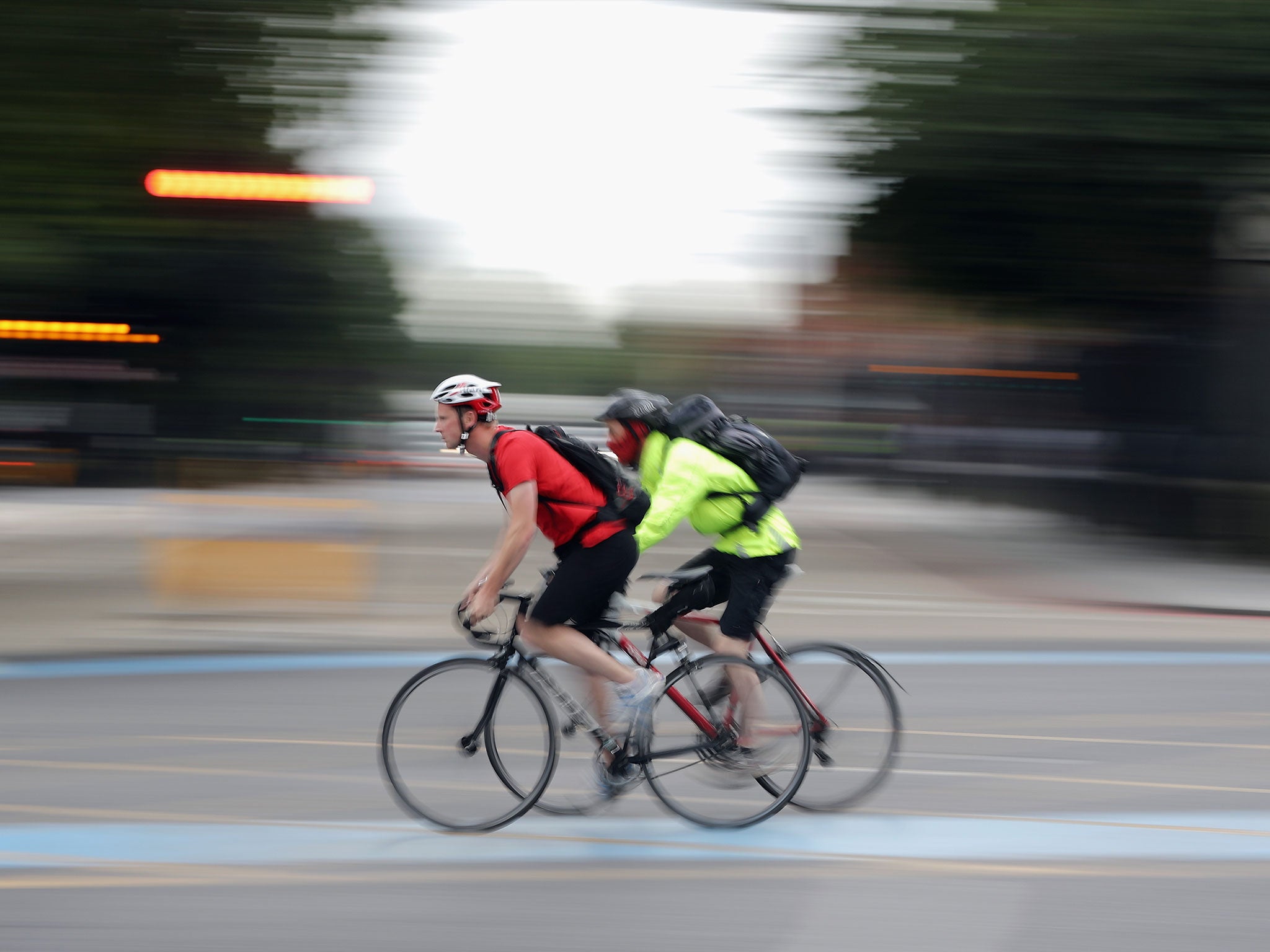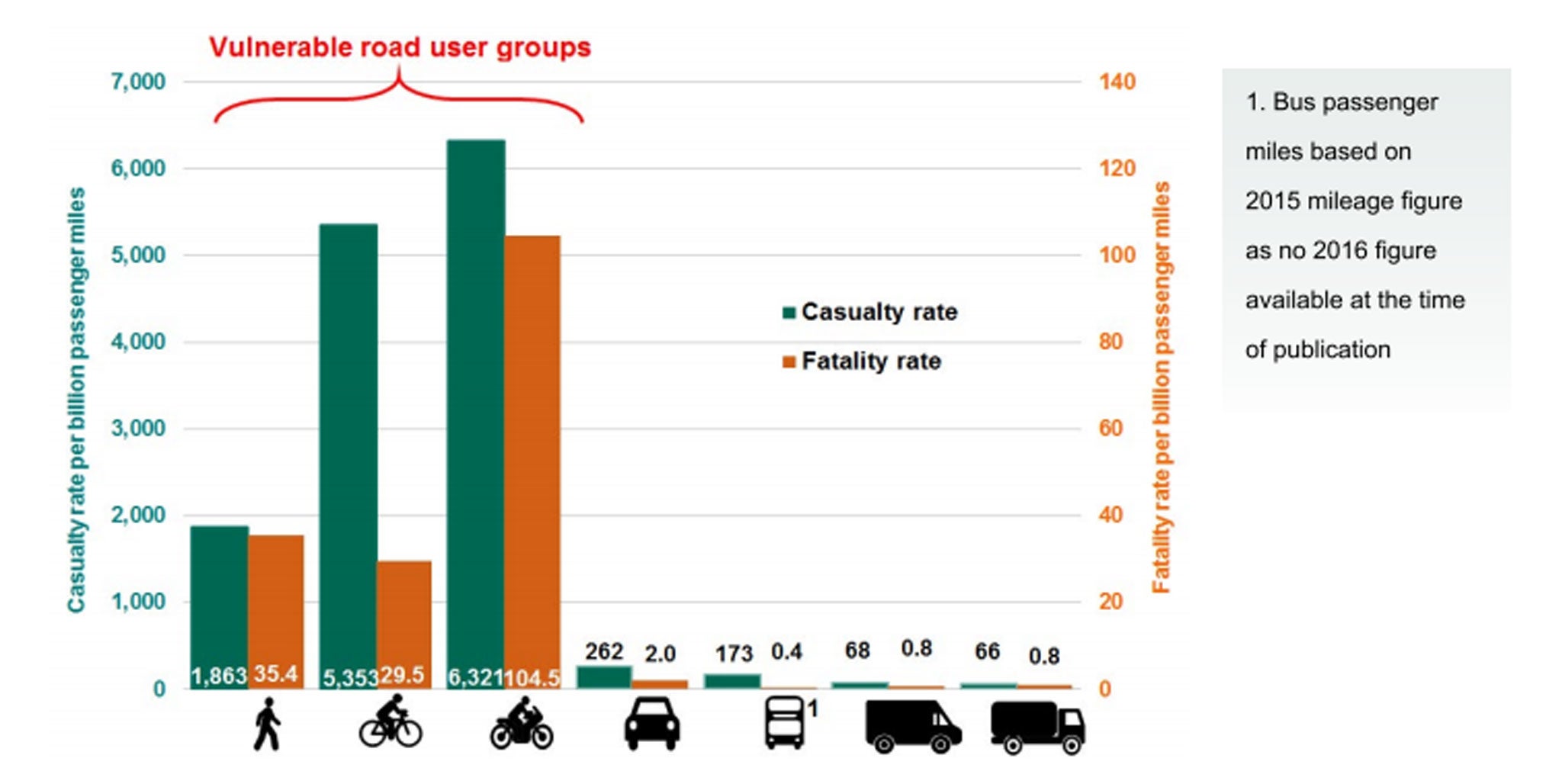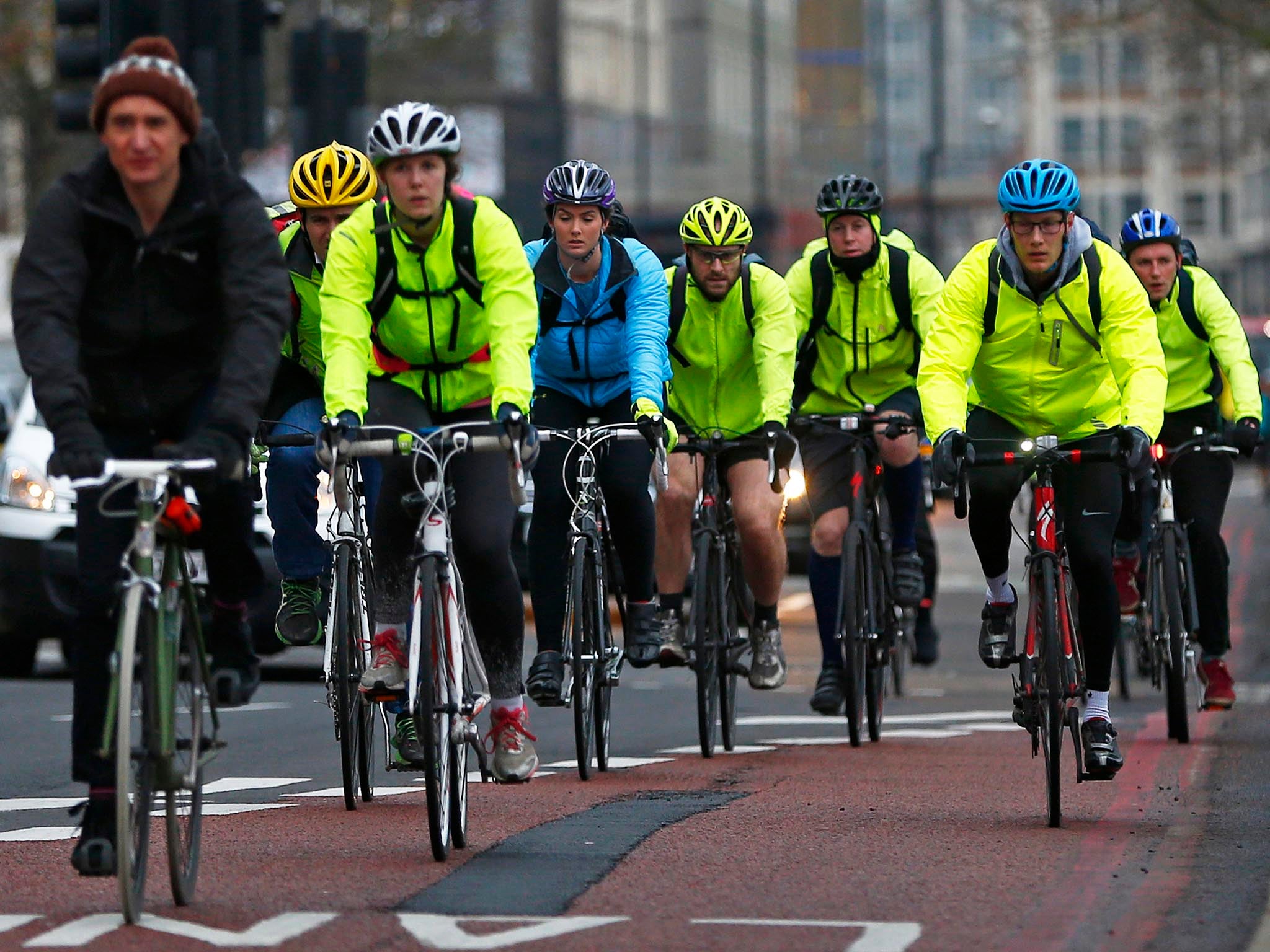Cyclists are 15 times more likely than drivers to be killed on UK roads - but the public debate paints a different story
In 2015, two pedestrians were killed and 96 seriously injured after being hit by a bicycle. But every year more than 100 cyclists are killed and more than 3,000 seriously injured on British roads – the majority by motorists

Your support helps us to tell the story
From reproductive rights to climate change to Big Tech, The Independent is on the ground when the story is developing. Whether it's investigating the financials of Elon Musk's pro-Trump PAC or producing our latest documentary, 'The A Word', which shines a light on the American women fighting for reproductive rights, we know how important it is to parse out the facts from the messaging.
At such a critical moment in US history, we need reporters on the ground. Your donation allows us to keep sending journalists to speak to both sides of the story.
The Independent is trusted by Americans across the entire political spectrum. And unlike many other quality news outlets, we choose not to lock Americans out of our reporting and analysis with paywalls. We believe quality journalism should be available to everyone, paid for by those who can afford it.
Your support makes all the difference.You are 15 times more likely to be killed on Britain's roads if you ride a bike than if you drive a car. That is the stark and sobering reality revealed in the latest Government road safety statistics.
But recent cases of cyclists colliding with pedestrians have once again reignited a debate around the dangers cyclists - and pedestrians - face, and often with the facts distorted.
Ben Pedley was just 26 when in March this year he was killed while riding his bike. The undergraduate chemistry student was cycling through Reading when a pedestrian stepped out in front of him, causing a collision that he would die from two days later.
His tragic case, and the inquest that followed, in which his family paid tribute to a “shining light….killed in the prime of his life”, failed to grab the attention of the public. The small amount of coverage there was suggested the cyclist had been at fault for “racing though a busy junction”.
Just days after Mr Pedley’s inquest, cycle courier Charlie Alliston was jailed for knocking down a mother-of-two on a London street. This time, it was the pedestrian, 44-year-old Kim Briggs, who died after stepping into his path.
The twin cases, just months apart, highlight the vastly disparate treatment, both by the courts and the public, of cyclists and other road users involved in traffic accidents. As a result of a campaign by Ms Briggs' widower, Matt, and with the support of his local MP, the Government has now agreed to reconsider road safety laws for cyclists, with a view to bringing in the offence of dangerous cycling.
There is clearly no defence for Alliston, who was riding an illegal bike without a front brake, and whose subsequent lack of remorse was the subject of much justifiable anger. But there is a risk that the visceral reaction to irresponsible cyclists is a distraction from the bigger killer on our roads: cars.
Statistics released by the Department for Transport show 102 cyclists died in Britain last year - a slight increase (of 2 per cent) on the previous year. In terms of casualty rates, for every billion miles cycled, there are 5,353 accidents and 29.5 deaths.
That compares with just 262 accidents and 2 deaths per billion miles for car drivers.

Those figures go some way to explaining why the Government announced on Sunday plans to increase sentences for dangerous drivers. A new offence of causing serious injury through careless driving will also be created.
But cycle campaigners Cycling UK, together with road safety organisations including RoSPA and RoadPeace, argue that a full review of all road traffic offences and penalties is still needed.
Legislation already exists to punish those on two wheels who “ride on the highway so as to endanger persons passing”, while pedestrians face no such deterrent.
Tim Williamson, a driver defence expert and criminal lawyer at Blake Morgan, who specialises in representing motorists in court, said he supported tougher laws for dangerous cycling. But he said existing legislation was “ill-equipped” for cases where a pedestrian was responsible for a collision with a bicycle.
Two offences are at the disposal of lawyers in cases where pedestrians are believed to be at fault – manslaughter and criminal damage. In both cases, the prosecution would have to convince the judge that the pedestrian who stepped out in front of a bike did so deliberately – something Mr Williamson said would be “very difficult” to prove.

In urban areas across the US, jaywalking is an offence, but replicating that law in the UK would likely be universally unpopular.
For cyclists, the Road Traffic Act 1991, which created cycling offences parallel but not equal to those of careless and dangerous driving, imposes maximum fines of £1,000 for careless cycling and £2,500 for dangerous cycling. If bodily harm is caused by the cyclist, they can be prosecuted for wanton and furious driving, which carries a maximum penalty of two years' imprisonment; compared with 14 years for death by dangerous driving.
It was this offence that Alliston was convicted of; the 20-year-old was cleared of the much more serious charge of manslaughter, with the prosecution having argued it was merited because he had taken deliberate steps to make his cycling dangerous.
The Department for Transport’s “urgent review” of laws governing cycling and road safety will look at whether a new offence equivalent to causing death by careless or dangerous driving should be introduced for cycling, but doubts have been raised about whether new laws are needed when the existing laws are so rarely used.
The charge of manslaughter against Alliston was the first time it had been used against a cyclist, and the overwhelming majority of cyclists involved in road traffic accidents continue to be the victim, rather than the cause, of crashes.
Chris Boardman, British Cycling’s policy adviser, who has been vocal about the unsafe and unpleasant road conditions many cyclists face, warned about knee jerk changes to the law that won’t reduce deaths.
He told The Independent he empathised with Matt Briggs, but added: “Laws should be developed so the penalties are proportionate to the ability to cause harm. This means basing them on evidence not headlines. I’m all for tougher penalties if they lead to actual reduction in casualties on the road.” Mr Boardman's mother, Carol, died last year after she collided with a pickup truck while riding her bike: no charges were brought against the driver.
In 2015 - the last year for which statistics relating to accidents caused by cyclists are available - two pedestrians were killed and 96 seriously injured after being hit by a bicycle. But every year more than 100 cyclists are killed and more than 3,000 seriously injured on British roads – the majority by motorists.
The list of victims is long, and includes Tom Ridgway, a 20-year-old cyclist who was knocked down and killed by a taxi driver who walked free from court with a £35 fine. It also includes four cyclists, one aged just 14, who were killed during a training ride when a driver ploughed into them after losing control on black ice. He was given a £180 fine.
Duncan Dollimore, head of campaigns at Cycling UK, acknowledged the Briggs' family’s “tragic and needless loss as a consequence of one man's reckless behaviour”, but questioned why the outrage was reserved for a cyclist when motorists were so often at fault.
“Unfortunately, many expressing understandable outrage are strangely quiet when thousands of other lives are destroyed by careless or dangerous driving,” he said. “You could ask, where's their outrage then, and why they seem inured to the 99.4 per cent of pedestrian deaths caused by drivers?"
For Mr Pedley, there was no time to brake or avoid the collision: riding at 24mph, well within the speed limit, there was very little the keen pianist could have done.
But his family’s sadness and anger stemmed from the fact that they believed it was an “avoidable death”. Mr Pedley’s mother, Jacquie, said: “At the moment, there is no law that says that if you step out into a road that you are responsible for your actions. Potentially, you could step out in front of somebody you had a vendetta against or push somebody else into the path and nothing would happen to you.”
The Government insists its review will improve all elements of cycle safety. Transport Minister Jesse Norman said the action would “help safeguard both Britain’s cyclists and those who share the roads with them”. Cyclists, pedestrians and drivers will hope it is successful.
Join our commenting forum
Join thought-provoking conversations, follow other Independent readers and see their replies
Comments